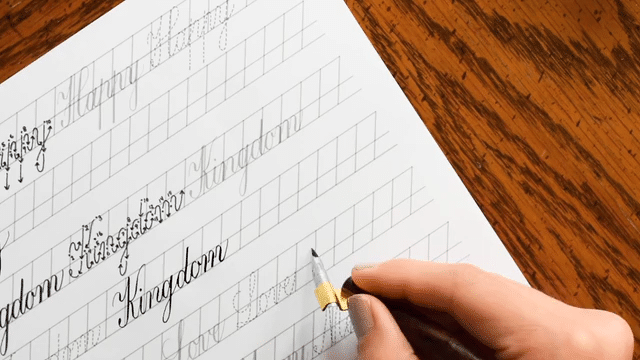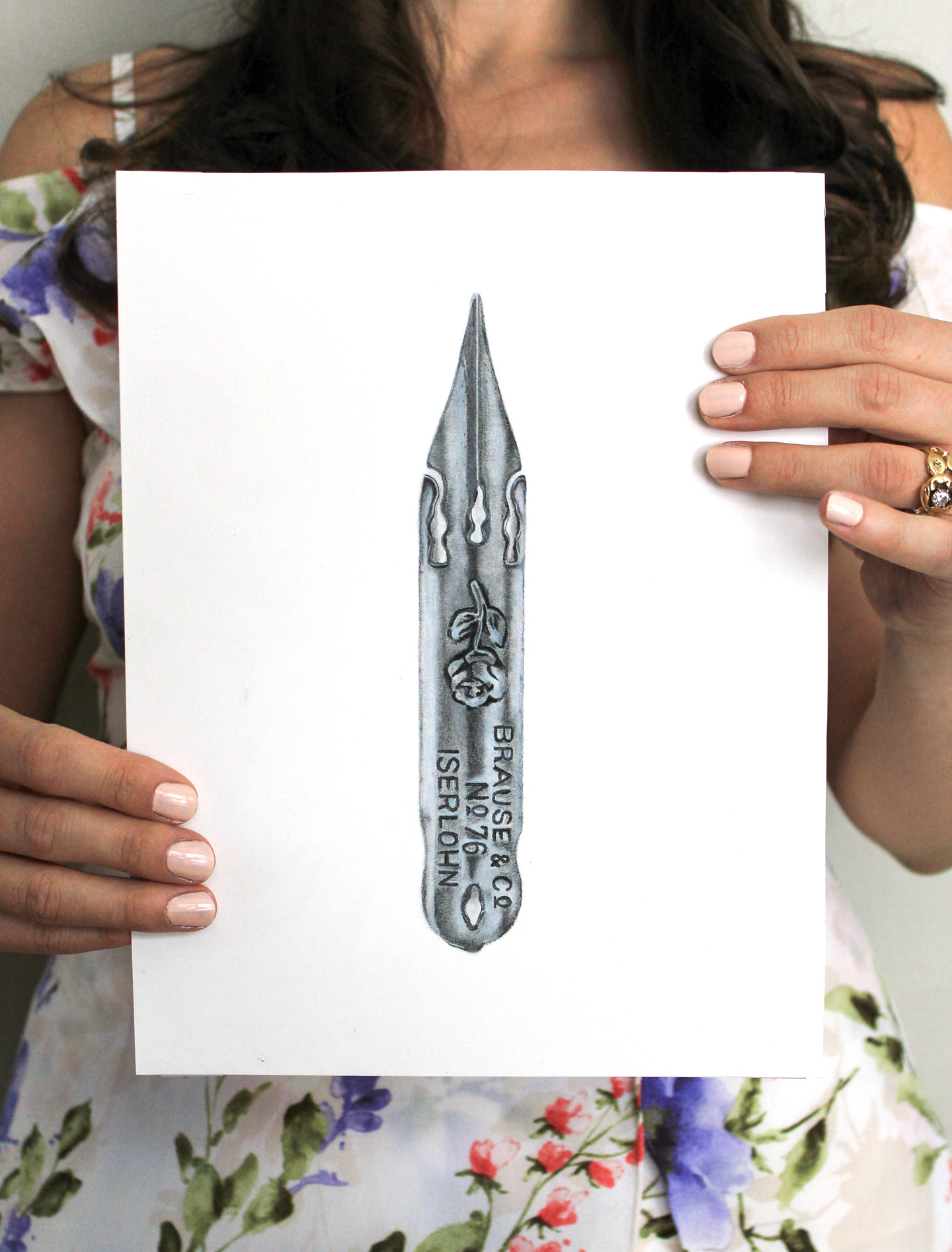
Having a good hand drawn frame concept up your sleeve is useful in all sorts of artistic situations! You can use a frame on mail art to make an address “pop”, or draw one around a quote to produce instant artwork. If you’re just in the mood to doodle, the hand drawn frame is something that will get you through that boring class or meeting!

In this tutorial, you’ll learn how to make a hand drawn frame that has an intricate, braided look to it. The instructions are simple and straight-forward: as long as you can draw a line, you can make this frame!
Drawing Pencil Guidelines
First, you’ll start with any rectangular envelope or piece of paper. (I am using an A7 envelope in the photo below.) Use a pencil and a ruler to draw lines that are parallel to the edges of the envelope. Each line should be 1/4″ (6.35 mm) from the edge that it is parallel to.

Next, pick up your ruler and pencil again, and draw four new lines that are parallel to the first four lines you drew. You’ll want to position these new lines 1″ (25.4 mm) away from your original lines. You don’t need to worry about writing the measurements on the envelope; I did that on the photo below to show you the distances!

Once you have drawn the pencil guidelines, you’re ready to use a pen to fill them in with shapes.
Filling in the Guidelines with Shapes
Before you draw the components of the frame, you’ll want to choose your writing utensil (or writing utensils, plural). For this tutorial, I used a Micron 08 pen and a Micron 03 pen because I wanted some nice stroke variation: the 08 makes thick strokes, and the 03 makes thin strokes. Stroke variation isn’t imperative for a hand drawn frame, but if you have pens like these on hand anyway, it’s something to consider!

Take your thicker pen (the 08), and use it to draw an almond shape in every corner of the envelope. The “almond” should stay within the pencil guidelines you drew!

Draw a petal shape on both sides of your almonds, then connect the tips of the almonds to the tips of the petals. You don’t have to stay strictly within the pencil guidelines! The main thing to remember from here on out is that every line you draw should be curved.

Add a semicircle to the side of each petal, as shown below:

Next, draw two connected almond shapes in the middle of each pencil guideline strip.

Continue to draw rounded lines and “almonds” until you have connected all the shapes. The frame should look something like the photo below:

Once you have drawn the shapes, it’s a good idea to erase your pencil guidelines.

Use your hand or a brush to wipe away the eraser scraps, and you’re ready for the next step!
Adding Lines to the Shapes
Now, here comes the fun, “zen” part: adding lines to the shapes! Grab your smaller pen (the 03), and draw curved lines within each shape. All of your lines should start at the same point, and end at the same point. For example, the lines in the almond shape below start at the top of the almond and end at the bottom. If the lines have common starting and stopping points, you’ll get a nice, dark tone at those points!

Go around the frame, filling in each shape systematically with curved lines.


The finished product will look something like this:

At this point, you can do whatever you want with your frame! I am using it for mail art, so I wrote an address inside. The curvy loops in Amy Style calligraphy complement the lines in the hand drawn frame beautifully!

The frame is gorgeous as-is, but a little pop of color never hurt anyone! You can use a large paintbrush to drip watercolor paint on top of the frame, if you wish. The random paint droplets give the piece a spontaneous and artistic look.

I love the way this hand drawn frame looks on mail art, but, honestly, it would complement any paper project! Gift tags, bookmarks, stationery … you can adapt it to fit many different needs. As long as you’ve got a pen and a few minutes to spare, you’re all set to make your own. If you do, I’d love to see your results on Instagram (tag @thepostmansknock)! I’ve been so impressed with all the TPK tutorial projects I am seeing on there, and I’d love to eventually share a blog post that showcases your gorgeous work. 🙂
I hope that you enjoyed this tutorial, and that you give it a try when your next creative urge strikes! Have a fantastic weekend, and thanks so much for reading TPK!
Warmly,





















